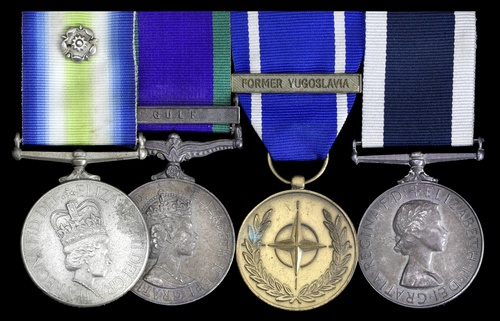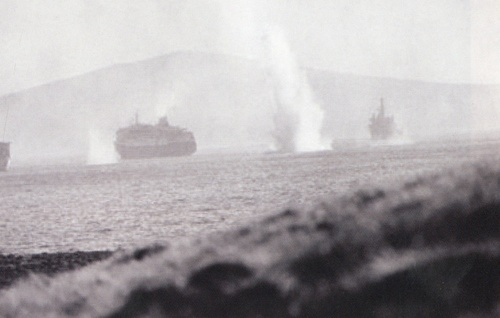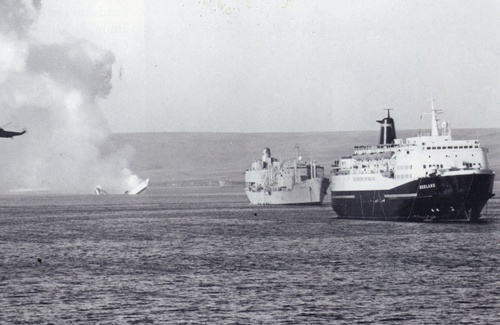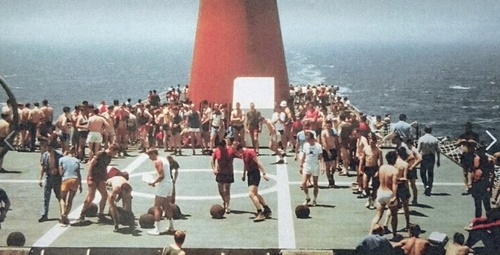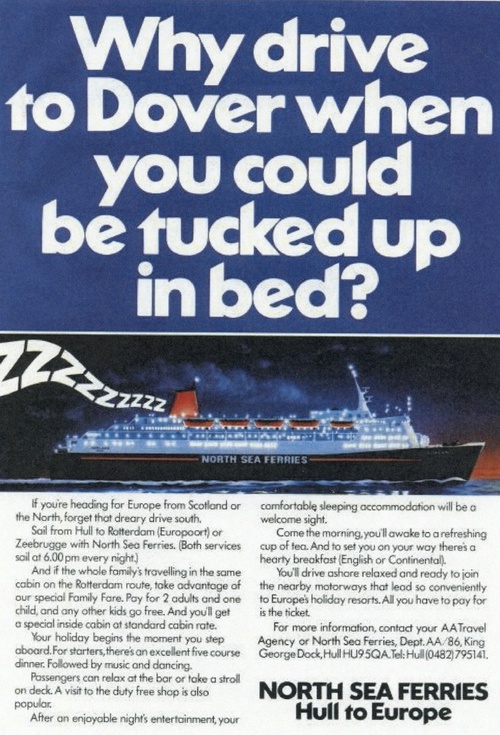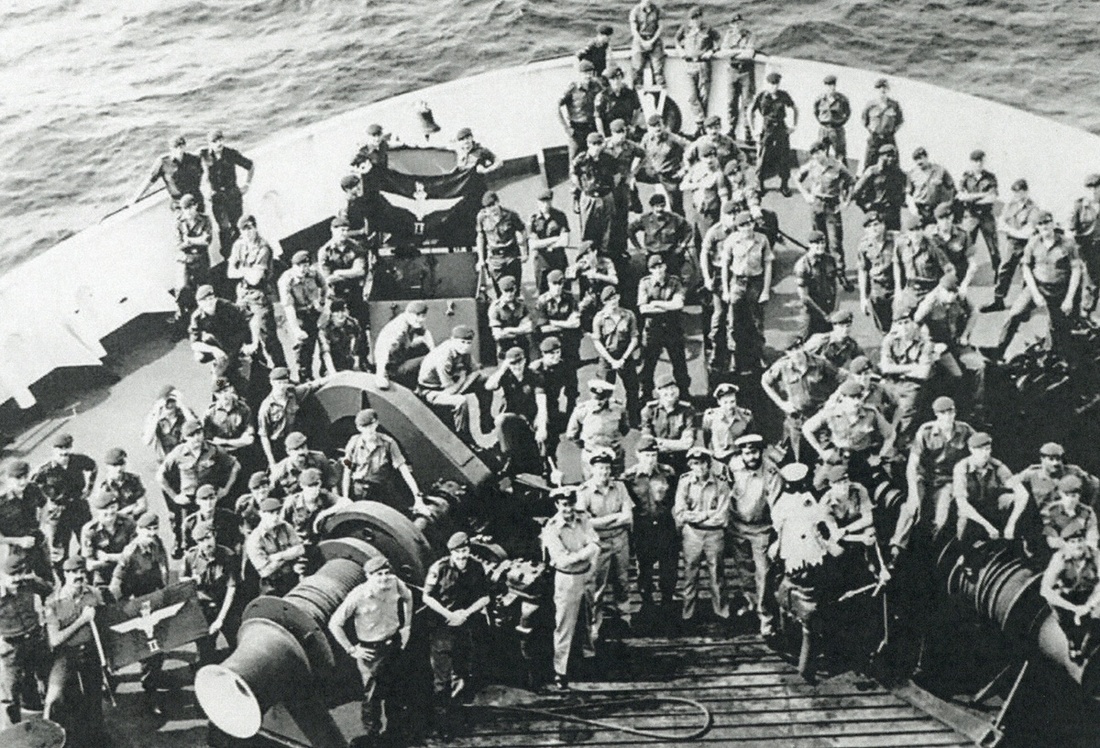Auction: 18003 - Orders, Decorations and Medals
Lot: 562
A fine Falklands War group of five awarded to Chief Petty Officer (Communications Technician) M. Cooper, Royal Navy, who served on the bridge of the M.V. Norland whilst under attack by the Argentine Air Force in San Carlos Water; as Leading Radio Operator to approximately 28 men of Naval Party 1850, it was his role to listen to the airwaves and gather vital operational and strategic intelligence for Commander C. J. Esplin-Jones, R.N.
South Atlantic 1982, with rosette (ALRO (T) M Cooper D166034V NP 1850); General Service 1962-2007, 1 clasp, Gulf (ACPOCT (A) M Cooper D166034V RN); N.A.T.O. Medal 1994-, 1 clasp, Former Yugoslavia; Royal Navy L.S. & G.C., E.II.R. (CPOCT (A) M Cooper D166034V RN); Jubilee 2002, the first four mounted as worn, light edge bruising to first and second, otherwise very fine and better (5)
Mike Cooper joined the roll-on roll-off North Sea Ferry M.V. Norland on 26 April 1982, fresh from her refit at King George Dock, Hull. The ship was fitted with two Sea King helicopter decks and had her fuel capacity increased to give her a range of 32 days steaming, which would enable her to travel from Portsmouth to the South Atlantic without refuelling.
As part of the Task Force for Operation Corporate, the codename for British Military Operations, it was the Norland's role to transport over a thousand paratroopers plus the personnel of 18 Squadron, R.A.F., on an 11-day trip to Ascension Island, where they would be disembarked and transferred to other ships. The civilian crew aboard saw the job very much as an adventure, a chance to serve their Country, and earn a few extra pounds as a bonus; a brass band played Rule Britannia and Don't Cry for me Argentina as the ship left Portsmouth to much fanfare.
As the fleet steamed south, Cooper's role became increasingly important, especially when weather conditions deteriorated and grey skies turned to dense fog and mist; all orders came through the Radio Room in Morse code, and vast amounts of information passed between the Task Force and Whitehall. The Radio Operators looked after the bridge electronics including the echo sounders, the direction finder, steering gear, fire detection system and radars, hence they were often the 'Captain's best friend' and the first to know of any developments, notably appreciation of the Argentine Air Force capability and the presence of submarines.
It didn't take long for tensions aboard the Norland to come to the fore, firstly as a result of there being - in effect - two crews aboard, the Merchant Navy personnel who viewed the Norland as a home and knew her inside out, and the Royal Naval personnel of NP 1850 who tried to impose their authority on an unimpressed crew. Warren Fitzgerald, author of All in the Same Boat, quotes Able Seaman Brian Shepherd, one of the Merchant Navy crew:
'But the navy crew came with their own captain and their own buffer (basically the naval equivalent of a bosun), a mad little prick who approached me on my patch the first day and said 'OK, stand down, fella, I'm in charge down here now.'
'You what?' I goes.
'You heard,' he says.
So I says, 'I tell you what, mate. Do us a favour and work out for me how much time you've clocked up in your career, would yer?'
I could see cogs working in his head straight away, but before he opened his gob I added, 'I mean actual sea time, not time spent in barracks or in navy college. Sea time. And I'll do the same.'
He came back to me a few minutes later, puffing out his chest and announced proudly, 'Two and a half years. Of actual sea time. Two and a half years.'
'Two and a half year, really?' I go.
He nods all proud of it, like.
So I go, 'Well I've got twenty-seven years so fuck off,' I said.
And he did.'
The Norland continued south through heavy seas and dark skies, listening intently to the faltering progress of diplomacy on the World Service and finally arrived at Freetown, Sierra Leone, on 3 May 1982. It wasn't just the crew of NP 1850 who were making their presence felt; underway once again, Shepherd was introduced to 2 Para:
'Some of 2 Para were mad bastards. And the closer we got to the Falklands the more excited some of 'em got.
'See him over there? One of the sergeants said to me one day, pointing to one of the Toms on deck, 'That's Trev. He'll be frothing at the mouth by the time we get to the South Atlantic. He can't wait. We were all in a line-up once at the barracks. Princess Royal was visiting and there she was working her way down the ranks and I'm thinking please don't stop at Trev, please don't stop at Trev. And what does she do? She stops at Trev and asks: "So what made you join the army, soldier?" A standard question, you know, to which you're supposed to give the stock answer "To serve Queen and country, ma'am." But Trev answers, "Because I like killing people, ma'am."'
At Ascension Island, the entire crew were assembled in the Continental Bar of the Norland. Esplin-Jones announced a 'slight' change of plan and the ship was now required to take the troops all the way to the Falklands and form part of the amphibious landing party along with H.M.S. Fearless and H.M.S. Intrepid. It was his understanding that the Norland would ferry the men into San Carlos Water behind Fearless and Intrepid, then, once they had got ashore on their small landing crafts, the Norland would turnabout and anchor far outside the battle zone; given the option to leave at Ascension, the civilian crew chose to stay. Norland was their ship and they were not leaving.
The next part of the journey was no less eventful, but more sobering; many of the young troops and civilian crew spent their time filling in Will forms and insurance papers. According to the authors Max Hastings and Simon Jenkins in The Battle for the Falklands, many of the teenagers aboard the Task Force ships 'had been scarcely aware of where the Falklands were' a week or two earlier. Aboard the Norland, the troops began using the seagulls as targets during firing practise; one killed an albatross, 'and so there was hell on. The merchant seamen went crackers coz it's a very bad omen to kill an albatross as far as sailors are concerned.'
A few days later, the Norland was joined by Lieutenant-Colonel Herbert 'H' Jones who parachuted onto the deck under the cover of darkness. He was the inspiration for making things happen in 2 Para; the morale and emphasis upon speed all stemmed from him. However, as the Norland reached the Falklands, Jones summoned the crew together for a second time:
'The order has changed,' he announced.
'Norland will be going in first, then Fearless, then Intrepid.'
At 0430 hours on 21 May 1982 Bob Lough, the Chief Officer aboard the Norland, broached this change of plan with Esplin-Jones as he piloted the ship into the anchorage at San Carlos Water in the dead of night, after the landing craft full of troops had left:
'Chris,' I asked, 'So how come we are now the lead ship going into the bay, and not Fearless or Intrepid?'
He shuffled uncomfortably for a long moment before muttering, 'Well, Bob, to be honest, we're not sure if the entrance to the bay is mined or not.'
'As you can imagine, I wasn't happy to hear that, but you couldn't deny it was good military thinking. Now the troops were all off, Norland, a mere passenger ferry, was expendable, whereas Fearless and Intrepid, both warships, were not.'
That morning the silence of the Falklands was obliterated by the immense noise of the naval ships, a mere 400 yards either side of the Norland, firing shells over the top of her towards the hills. The small Naval Party remained behind, but the ship largely consisted of the Merchant crew who hunkered in their bunks. At Ascension, machine-guns had been set up on the Bridge wings and upper decks, but as the Argentine Air Force began their raids that morning the remaining crew were in for a surprise. According to Lough:
'When the time came for the troops to go ashore we soon realised they had buggered off with all the good gear!'
On the bridge, the crew witnessed relentless attacks by Argentine fighter aircraft and were often terrified by our own Harrier jets which would pass so low and fast that everything inside would shake. They also watched as three enemy aircraft bombed the frigate Ardent, killing over 20 men and leading to the sinking of the ship the following morning; it was a sobering sight and suddenly the fate of Norland was staring the crew in the face. This was reinforced with the demise of Antelope and the transfer of survivors to Norland.
After a near miss, whereupon the Argentine Air Force bombed the exact spot where the Norland was anchored the night before, she left Falkland Sound on 25 May 1982 and sailed with the Canberra towards South Georgia, out of reach of the Skyhawks. Feeling safer, a few days later they picked up a distress message from the B.P. tanker British Wye; a Hercules was making passes over them and the crew was pushing bombs out of the back of the plane. The Norland was safe from Skyhawks, but apparently not a converted cargo plane!
At Grytviken harbour, the Norland transferred survivors from the Antelope onto the Q.E. 2 and took on a number of Gurkhas and the Field Ambulance. John Graham, Assistant Pursar, recalls them suffering from extreme seasickness:
'Having the Gurkhas on board was very different to having 2 Para.'
'One came up to me in the bar looking right queasy and barked:
'Drink!'
'He looked like some of us did after a night on the piss so I poured him a large tomato juice with heaps of Tabasco sauce. A bloody Mary minus the vodka coz they wasn't allowed alcohol. That seemed to sort him out.'
On returning to the Falklands, the Norland landed the Gurkhas and picked up 500 prisoners from Goose Green. It was then that she began her role transferring the Argentinians back to Montevideo, and later ferried men and goods between the Falklands and Ascension. Returning to U.K. waters, having spent 114 days away and travelled 27,313 miles as part of Operation Corporate, the Norland later resumed her Hull to Rotterdam service.
Sold with a large photocopied A4 file detailing War Orders for the M.V. Norland (LPH 169), A list of all movements regarding the ship, a crew list for NP 1850 and a copy of an Extension of Engagement document for M. Cooper, NP 1850, dated 18 May 1982.
Reference sources:
Fitzgerald, Warren, All in the Same Boat, the untold story of the British ferry crew who helped win the Falklands War (John Blake publishers, London 2016).
Hastings, Max, & Jenkins, Simon, The Battle for the Falklands (Book Club Associates, London 1983).
Subject to 20% VAT on Buyer’s Premium. For more information please view Terms and Conditions for Buyers.
Estimate
£2,200 to £2,400

